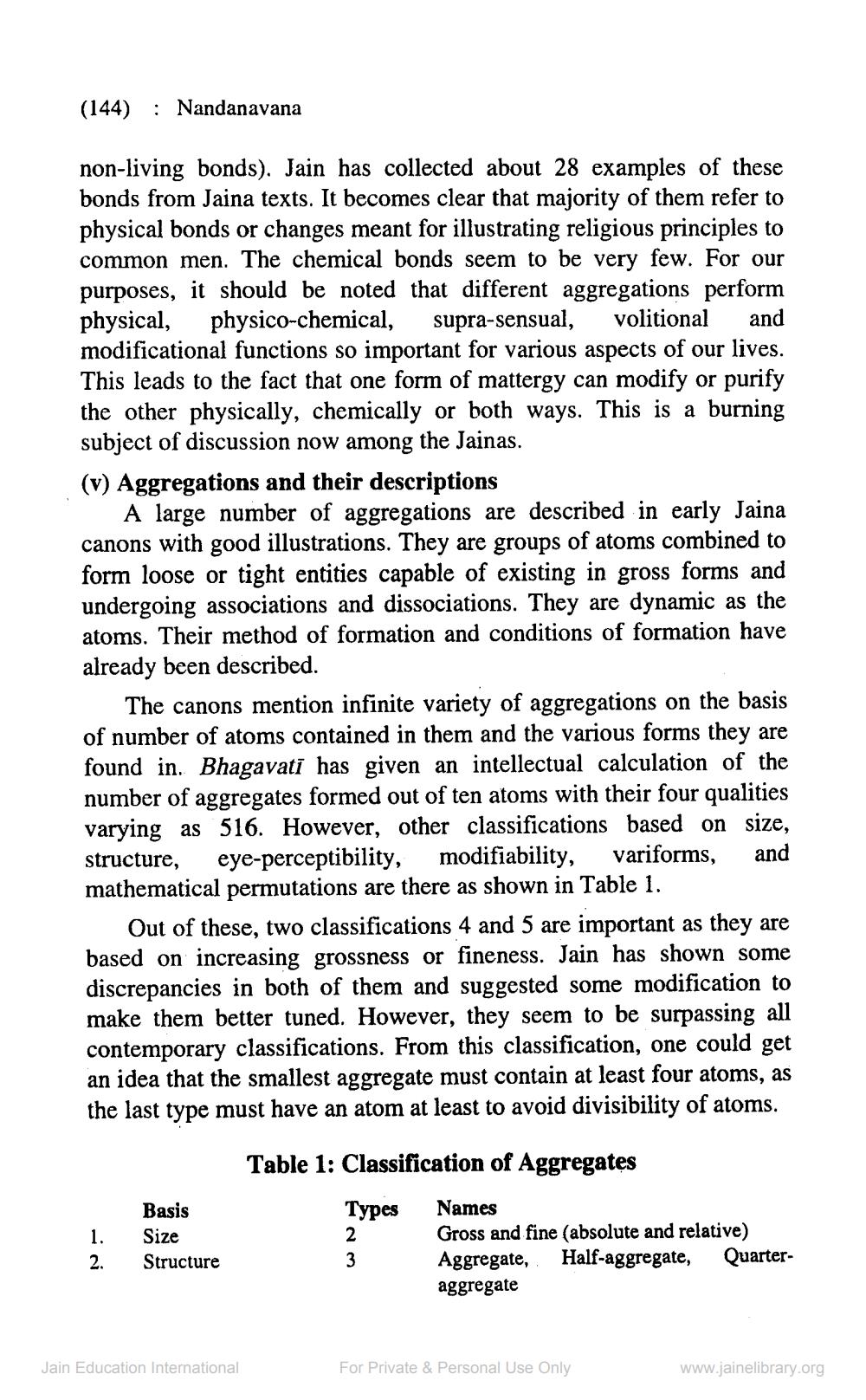________________
(144) : Nandanavana
non-living bonds). Jain has collected about 28 examples of these bonds from Jaina texts. It becomes clear that majority of them refer to physical bonds or changes meant for illustrating religious principles to common men. The chemical bonds seem to be very few. For our purposes, it should be noted that different aggregations perform physical, physico-chemical, supra-sensual, volitional and modificational functions so important for various aspects of our lives. This leads to the fact that one form of mattergy can modify or purify the other physically, chemically or both ways. This is a burning subject of discussion now among the Jainas. (v) Aggregations and their descriptions
A large number of aggregations are described in early Jaina canons with good illustrations. They are groups of atoms combined to form loose or tight entities capable of existing in gross forms and undergoing associations and dissociations. They are dynamic as the atoms. Their method of formation and conditions of formation have already been described.
The canons mention infinite variety of aggregations on the basis of number of atoms contained in them and the various forms they are found in. Bhagavati has given an intellectual calculation of the number of aggregates formed out of ten atoms with their four qualities varying as 516. However, other classifications based on size, structure, eye-perceptibility, modifiability, variforms, and mathematical permutations are there as shown in Table 1.
Out of these, two classifications 4 and 5 are important as they are based on increasing grossness or fineness. Jain has shown some discrepancies in both of them and suggested some modification to make them better tuned. However, they seem to be surpassing all contemporary classifications. From this classification, one could get an idea that the smallest aggregate must contain at least four atoms, as the last type must have an atom at least to avoid divisibility of atoms.
Table 1: Classification of Aggregates
Types
Basis Size Structure
Names Gross and fine (absolute and relative) Aggregate, Half-aggregate, Quarteraggregate
Jain Education International
For Private & Personal Use Only
www.jainelibrary.org




